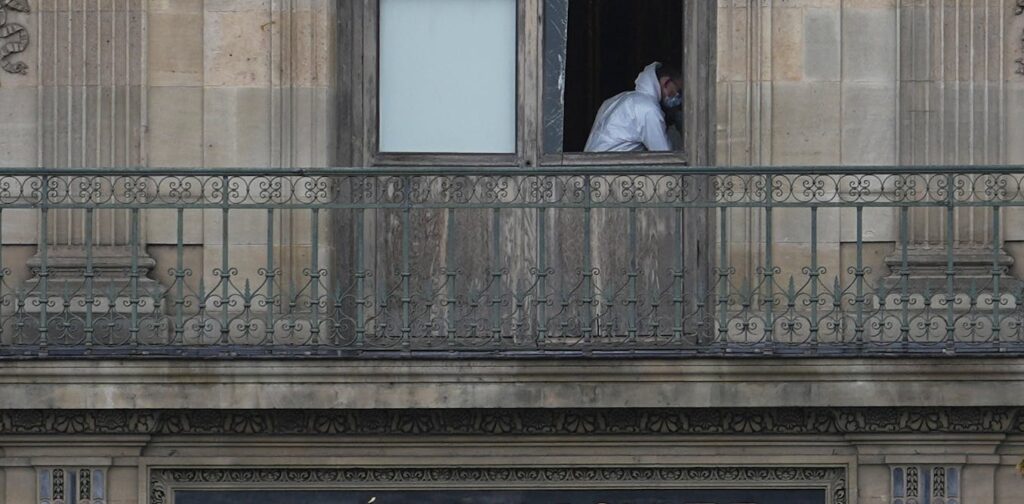
A daring heist at the Louvre in Paris has resulted in the theft of nine priceless objects, including France’s royal jewels formerly owned by Empress Eugénie, the wife of Napoleon III. The incident occurred on March 3, 2024, during the museum’s busy Sunday hours, when a group of four men executed their plan with alarming efficiency.
Arriving at the museum around 09:30, the thieves wore fluorescent vests and drove a flat-deck truck to the entrance. Using an extendable ladder, they quickly accessed the second storey, cut through a window, and entered the Galerie d’Apollon. Armed with power tools, they made off with the valuable jewels within a mere seven minutes.
The stolen items include Empress Eugénie’s crown, which is adorned with eight gold eagles, 1,354 brilliant-cut diamonds, 1,136 rose-cut diamonds, and 56 emeralds. The crown alone represents a significant cache of gems that could potentially be melted down and sold on the black market.
Security concerns have intensified following this audacious theft. Although five security staff were nearby and alarms were triggered, the rapid execution of the heist raises questions about the effectiveness of both electronic and human security measures at one of the world’s most famous museums.
This incident is not the first of its kind. In 2019, a fully functioning 18-karat gold toilet titled America, created by artist Maurizio Cattelan, was stolen from Blenheim Palace in England. That theft took just five and a half minutes, and the toilet was valued at approximately £4.8 million at the time. Similarly, Vincent Van Gogh’s painting, The Parsonage Garden at Neunen in Spring, was stolen during the COVID-19 pandemic from the Singer Laren Museum in the Netherlands but was eventually recovered in late 2023.
The rapid nature of art heists raises concerns about the vulnerability of such invaluable items. For instance, the National Gallery of Victoria experienced its own notorious theft in 1986 when the painting Weeping Woman by Picasso was taken. The artwork was returned shortly after, but the incident highlighted the precariousness of art security.
The challenges of recovering stolen art are significant. Globally, estimates suggest that the recovery rate for stolen artworks may be as low as 10%. The nature of paintings makes them particularly difficult to sell, as their physical characteristics are easily recognisable. In contrast, items made from precious materials, like the jewels and the gold toilet, can potentially be repurposed, complicating recovery efforts.
This latest theft at the Louvre underscores the ongoing battle between art preservation and criminal activity. Objects intended for public enjoyment and historical significance become targets for those seeking quick financial gain. The irony is palpable, as many items in museums are donated for public safekeeping.
The stolen jewels, part of France’s rich history, are irreplaceable. Their loss deprives the public of appreciating their beauty and craftsmanship. As investigations unfold, the fate of the jewels remains uncertain, but history shows that art theft can lead to unexpected developments. For instance, the Mona Lisa was itself stolen in 1911 and recovered two years later.
As authorities work to track down those responsible for this latest heist, the incident serves as a stark reminder of the vulnerabilities faced by art institutions. With budget cuts often leading to reduced security staff, the responsibility of safeguarding these treasures often falls on individuals with limited resources.
In the end, the stolen jewels from the Louvre represent not just a financial loss but a cultural one as well. They are a testament to France’s artistic heritage, and their theft resonates deeply within the context of the ongoing narrative of art and crime.






